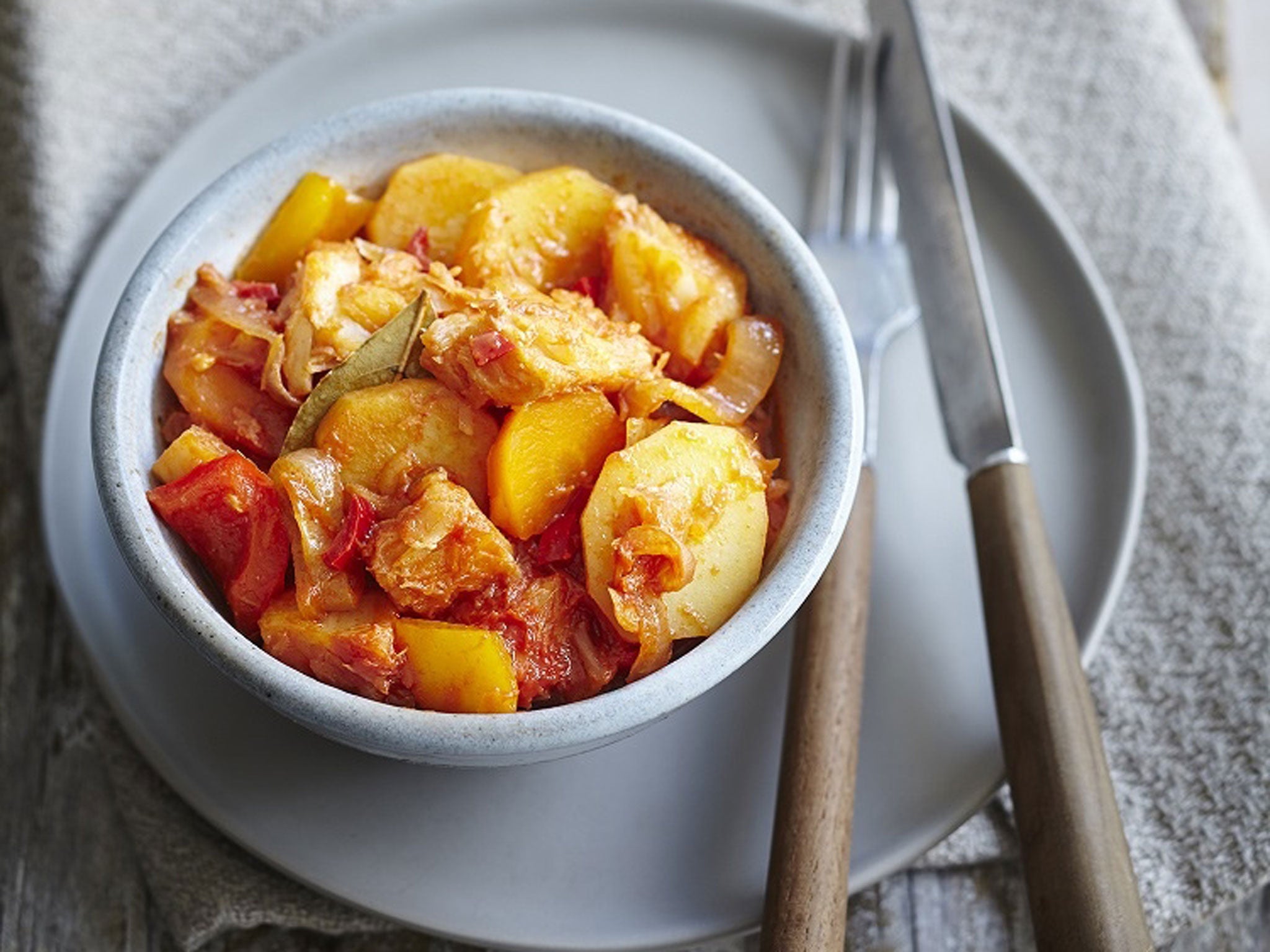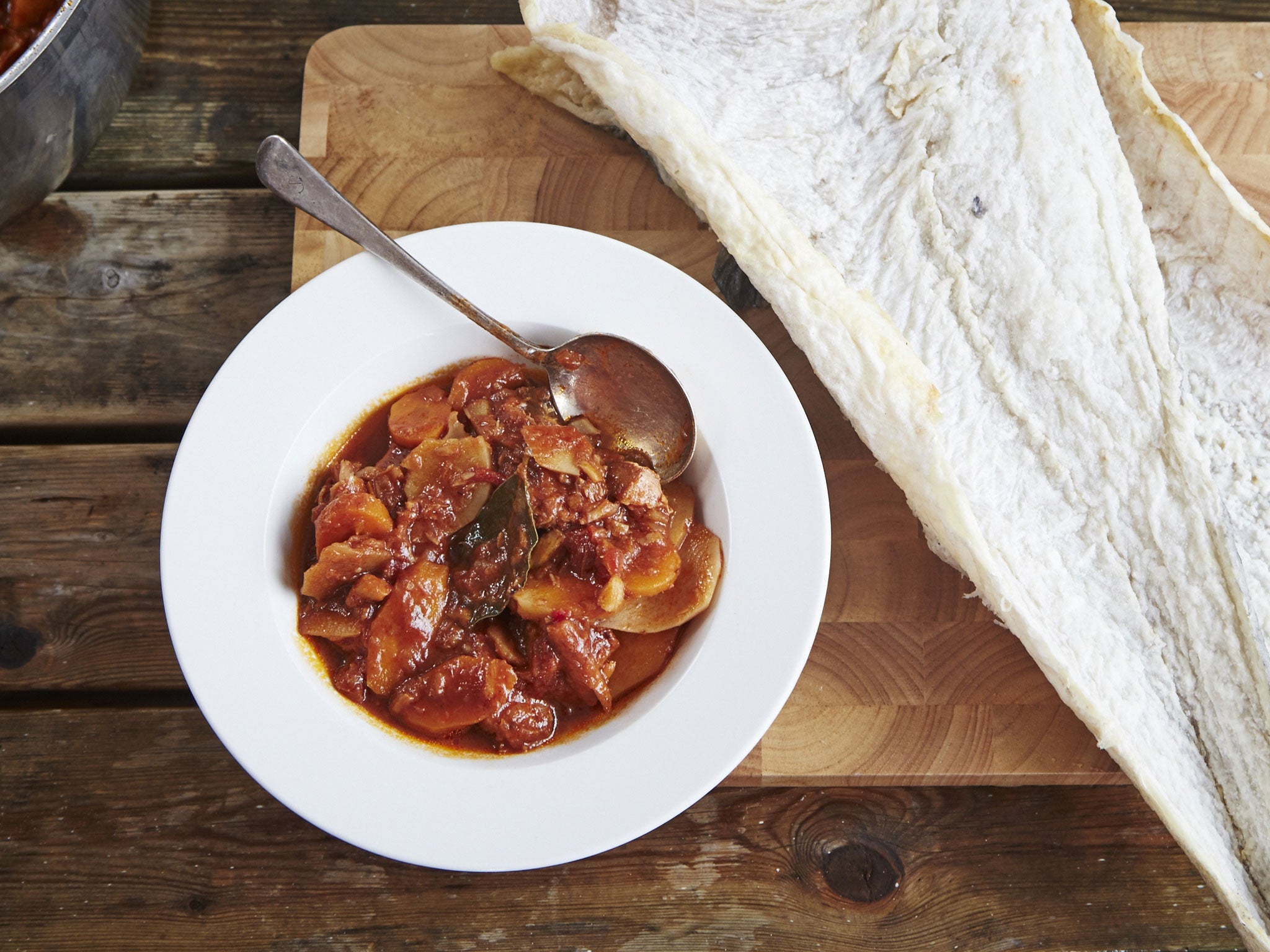Chef Valentine Warner hopes to convert British diners to salt cod, but can we can handle it?
Salt cod is produced in the frozen north, treasured in the Mediterranean – and an acquired taste, as Gerard Gilbert discovers
Your support helps us to tell the story
From reproductive rights to climate change to Big Tech, The Independent is on the ground when the story is developing. Whether it's investigating the financials of Elon Musk's pro-Trump PAC or producing our latest documentary, 'The A Word', which shines a light on the American women fighting for reproductive rights, we know how important it is to parse out the facts from the messaging.
At such a critical moment in US history, we need reporters on the ground. Your donation allows us to keep sending journalists to speak to both sides of the story.
The Independent is trusted by Americans across the entire political spectrum. And unlike many other quality news outlets, we choose not to lock Americans out of our reporting and analysis with paywalls. We believe quality journalism should be available to everyone, paid for by those who can afford it.
Your support makes all the difference.Say 'salt cod' to most British people and they say 'no thanks'," remarks Valentine Warner as we tuck into a warming stew of salt cod, potatoes and tomatoes that the television chef had prepared earlier. The dish is a perfect riposte to the rain pelting down outside the large plate-glass window, smothering the otherwise spectacular view in low cloud. "I used to live on the Golborne Road in Notting Hill, a very Portuguese area," says Warner. "You'd eat three salt-cod cakes with your coffee each morning."
We're not in Notting Hill now, or even in Portugal for that matter, but above the Arctic Circle on Norway's Lofoten Islands – the ancestral spawning grounds of Norwegian cod, the most cod-rich waters in Norway's already enviably teeming seas, and therefore the most cod-rich expanse in the world.
To be precise, we're in the picturesque little port of Nusfjord, now a tourist location but once home to a fishing fleet, with every available inch of dry land smothered in dead cod hanging on racks like clothes on an old-fashioned wash day. They were exported to the Mediterranean lands where they are most appreciated. The desiccated cod heads – and a sprinkling still hang around the town like totems to ward off evil spirits (or illegal fishing trawlers) – are exported to Nigeria, where they are considered a great delicacy.
Both Warner and I had been out fishing that morning, Warner landing a haddock while I managed to land a "gadus morhua" (Atlantic cod) itself – not a big one and scant kudos for my inner Ernest Hemingway because fishing for cod in these parts is probably easier than shooting fish in the proverbial barrel.
Even without the assistance of sonar to pinpoint the presence and depth of shoals beneath our stainless-steel dory, and of my pilot Geir, a fisherman so experienced that he is a local celebrity known as Doctor Hook, you have to be very unlucky not to catch cod in these parts. Anyhow, the juvenile specimen and I eyeball each other for a few moments before I give Geir the nod, and he unhooks the youngster and throws it back into the chilly deep. Who knows, the fish's final destination may be Harry Ramsden's, the chippie chain sourcing part of its cod from Norwegian waters.

But surely Hugh Fearnley-Whittingstall has drummed into us that we shouldn't be fishing for cod in the first place – that stocks are perilously low and its continued consumption unsustainable, and that piscivores should be switching to alternatives such as pollack or gurnard. That may be true of Newfoundland and in the North Sea, but thanks to decades of tightly controlled fishing quotas and other enlightened policies, the Norwegian cod is thriving.
For example, while the EU only agreed a few months ago to abandon the disgracefully wasteful practice of chucking less valuable fish back in the sea, Norway banned so-called "discards" back in 1987. And now scientists believe that the Norwegian glut is growing even bigger as melting of the Arctic ice spawns a massive surge in cod stocks because it opens up large areas of shallower water. Every cloud has a silver lining.
As Warner prepares to cook his haddock (with morel mushrooms and bacon) for the benefit of his new TV show, Valentine Warner Eats Scandinavia, I slip off back to the "hotel", a collection of sparsely furnished fishermen's huts, to chat with our informative host, Yngvar, about what really interests me about cod – the dried or salted version of the fish known to the Portuguese as bacalhau, and to Italians as baccala. So favoured is salt cod over the fresh cod in these countries, that none of the languages has an indigenous word for the unsalted variety.

In his book, Cod ("a biography of the fish that changed the world"), Mark Kurlansky tells how the Vikings first cured the gadus, using it as a rich supply of nourishment (the dried fish is 80 per cent protein) during their travels from Norway to Iceland, to Greenland and to Canada – the exact range of the Atlantic cod. But it was the Basques of north-eastern Spain and south-western France who, unlike the Vikings, possessed salt, and cod salted before drying lasts far longer.
The Basque cod-hunting grounds were off the coast of Newfoundland (some claim they made it to North America long before Columbus), and soon the widespread taste for salt cod was established on the Iberian peninsula. And when the Hanseatic League – a medieval trading bloc of north European states – started shipping Norwegian salt cod to Portugal, the Portuguese preferred that to their own, and a north-south trade was born. And it's a two-way trade. "This wonderful tomato dish we're eating," says Warner, "it's a hangover from trading with Portugal. Norway isn't famous for its tomatoes."
Back at the hotel, Yngvar is preparing a salt-cod feast. He'd been heard at 3am by a worried fellow guest clattering about in the light of the midnight sun sorting his "stockfish" (cod dried without salt; from the Dutch word for "pole", the cod is left to hang outside) from his "klipfish", which is dried after salting. He also deep fries some battered cod tongues (actually the throat), which is gelatinous and a local delicacy, and prepares a rich stew, not unlike the one Warner had cooked earlier.
I am delighted, having long savoured salt cod – much to the surprise of worried restaurateurs in Spain, who, adding together the facts that I am British and have just chosen "bacalao" from the menu, often return to my table to check that I know exactly what I have ordered. "I love its saltiness," agrees Warner. "It doesn't eat like fresh cod – it's a different textural experience. And as a cook I love its practicality… it's rock-hard, like body armour. It's such an old-fashioned food."
Given half a chance, you feel, this adaptable, long-lasting and highly nutritious food could become a new fashion, too.
Valentine Warner Eats Scandinavia begins on Good Food on Monday 16 September at 8pm
Join our commenting forum
Join thought-provoking conversations, follow other Independent readers and see their replies
Comments